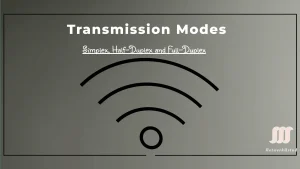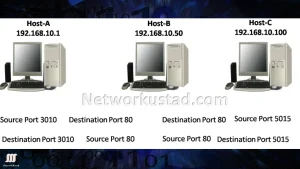EIGRP is the abbreviation of Enhanced Internal Gateway Routing Protocol. It is a unique protocol of Cisco and can only run on Cisco devices. Therefore, unlike OSPF and RIP, EIGRP has special RFC documents. Its predecessor is IGRP. Of course, it is similar to IGRP only in the calculation of metric value, and it is very different in other aspects. It combines the distance vector and link state protocols. It has the characteristics of distance vector and link state protocols. It supports VLAN and discontinuous sub-nets. The link topology calculated according to its core algorithm is 100% acyclic. The most important feature is fast convergence and does not occupy bandwidth. When the physical topology does not change, it will only send some simple keep-alive messages to maintain it. It supports a variety of protocols and is simple to configure. The following part introduces some simple contents of EIGRP:
1. Three Tables of EIGRP
Neighbor Table: two routers directly connected physically. If both routers are running EIGRP, they will become EIGRP neighbors
Topology Table: place all paths to different network segments
Routing Table: place the optimal path to the destination as the forwarding basis
Then let’s talk about how they communicate with each other, that is, how to fill in three tables:
1. after running EIGRP, the router will send hello packets in the network segment of 224.0.0.10. After receiving Hello from each other, you can find out which neighbors you have. Then put the results you get into the neighborhood table. Hello: used for neighbor discovery and recovery. (Multicast)
2. after they have established their neighbors, they start to use the update message to transmit routing information to each other. When you receive the update message from the other party, you will send a confirmation message to the other party to tell him that you have received it, that is, an ACK message. Then you fill in your own topology table, which contains all paths. It can form a theoretical topology. Update: deliver route updates, including only required router entries. Unicast is used when updating a specified router, and Multicast is used when updating multiple routers.
ACK: used to confirm Update/Query/Reply (Unicast)
3. a query message is a message sent to a neighbor to confirm whether it is true after your topology has changed Query: when a Feasible Successor is not found, a query message (multicast) will be sent
Reply: Respond to query message. (Unicast)
4. finally, the router uses the core algorithm to calculate the optimal path to a network outage according to the topology table and put it into the routing table.
<a href=”https://www.spotodumps.com/”>https://www.spotodumps.com/</a>
2. Dual Algorithm (Core Algorithm)
Diffusion Update Algorithm: used to calculate the optimal loop-free path and standby path
characteristic:
① Acyclic topology
② Acyclic standby paths available immediately
③ Fast convergence
④ Low bandwidth utilization (through limited updates)
Terminology:
Successor: the best route to the target network, which is stored in the routing table and used to forward packets.
Feasible Distance (FD): the measure of reaching the target network by itself.
Feasible Successor: it is a sub-optimal route, which is shorter than the feasible distance. It is considered a backup route,
The AD of the next hop router to a specific network must be smaller than the current FD.
Advertised Distance (AD): the measure of the neighbor’s reaching the target network, which is stored in the topology table.
Feasible Conditions (FC): AD<, FD
When the advertised distance of a neighbor to a network is shorter than the feasible distance of a local router to the same destination network.
ccie dumps>>




